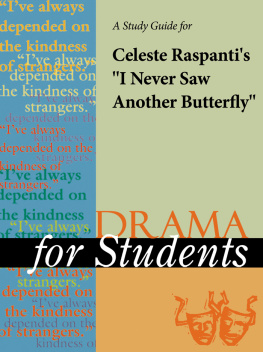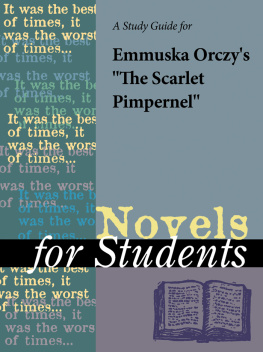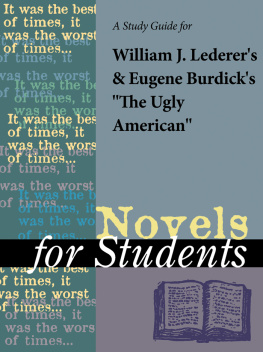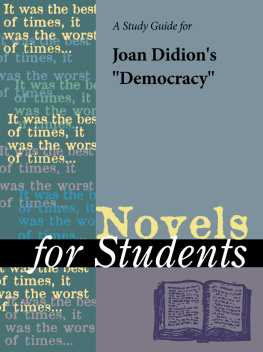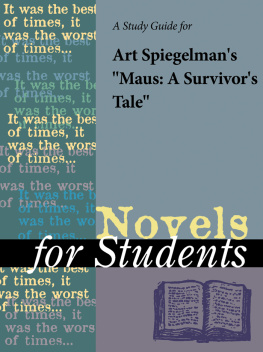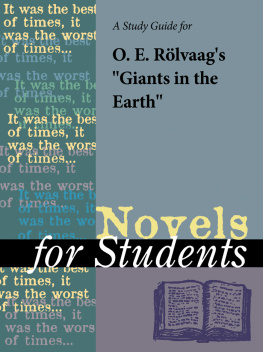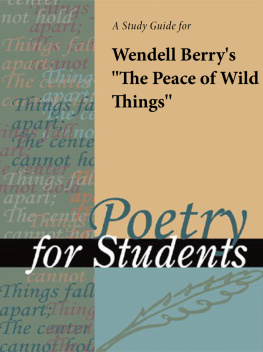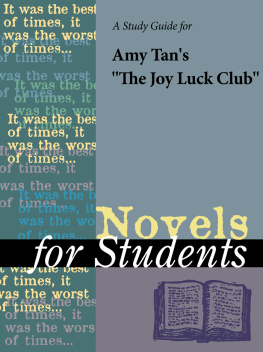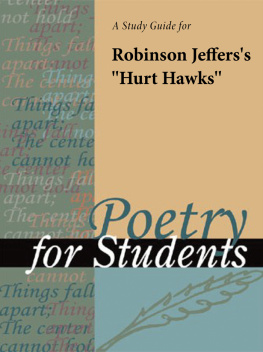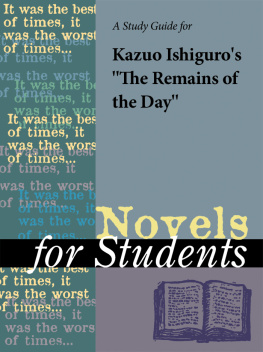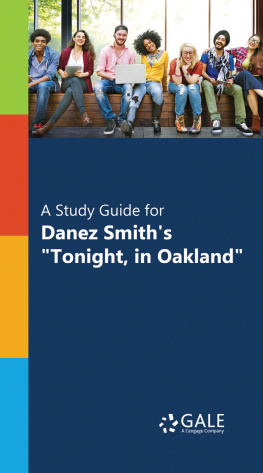TABLE OF CONTENTS
Guide
Poetry for Students, Volume 38
Project Editor: Sara Constantakis
Rights Acquisition and Management: Margaret Chamberlain-Gaston, Sara Crane
Composition: Evi Abou-El-Seoud
Manufacturing: Rhonda Dover
Imaging: John Watkins
Product Design: Pamela A. E. Galbreath, Jennifer Wahi
Content Conversion: Katrina Coach
Product Manager: Meggin Condino
2011 Gale, Cengage Learning
ALL RIGHTS RESERVED. No part of this work covered by the copyright herein may be reproduced, transmitted, stored, or used in any form or by any means graphic, electronic, or mechanical, including but not limited to photocopying, recording, scanning, digitizing, taping, Web distribution, information networks, or information storage and retrieval systems, except as permitted under Section 107 or 108 of the 1976 United States Copyright Act, without the prior written permission of the publisher.
Since this page cannot legibly accommodate all copyright notices, the acknowledgments constitute an extension of the copyright notice.
For product information and technology assistance, contact us at Gale Customer Support, 1-800-877-4253.
For permission to use material from this text or product, submit all requests online at www.cengage.com/permissions.
Further permissions questions can be emailed to permissionrequest@cengage.com
While every effort has been made to ensure the reliability of the information presented in this publication, Gale, a part of Cengage Learning, does not guarantee the accuracy of the data contained herein. Gale accepts no payment for listing; and inclusion in the publication of any organization, agency, institution, publication, service, or individual does not imply endorsement of the editors or publisher. Errors brought to the attention of the publisher and verified to the satisfaction of the publisher will be corrected in future editions.
Gale
27500 Drake Rd.
Farmington Hills, MI, 48331-3535
ISBN-13: 978-1-4144-6705-4
ISBN-10: 1-4144-6705-2
ISSN 1094-7019
This title is also available as an e-book.
ISBN-13: 978-1-4144-7389-5
ISBN-10: 1-4144-7389-3
Contact your Gale, a part of Cengage Learning sales representative for ordering information.
Printed in Mexico
1 2 3 4 5 6 7 15 14 13 12 11
The Weary Blues
Langston Hughes
1925
Introduction
The publication of The Weary Blues in 1925 was the centerpiece of one of the most successful publicity stunts in literary history, one that elevated its author, Langston Hughes, to fame as a leading African American writer. Hughes thought of himself as a poet, but like most modern poets, found that he had to write in other formats to support himself, and so he was also a short-story writer, novelist, essayist, and newspaper columnist. Hughes is generally ranked among the greatest African American writers of the first half of the twentieth century; he is slightly older than the novelists Ralph Ellison and Richard Wright, who are the best comparisons for his literary achievement. Hughes is a figure of the Harlem Renaissance, the flourishing of black artistic achievement centered in the Harlem neighborhood of New York City during the 1920s. Hughes was widely traveled, and his aesthetic and political views were informed by the wider perspective of an international black community embracing Paris, Africa, and the Caribbean. The Weary Blues was written at the beginning of Hughes's career. It brought him popularity in the black community as a leading poet and representative voice, as well as in the American scene at large, popularity that had him using his summer breaks from college for national book tours.
Author Biography
James Langston Hughes usually stated that he was born on February 1, 1902, in Joplin, Missouri, but with no birth certificate, he was not completely certain. This uncertainty can stand, perhaps, as a symbol of the marginal nature of the world he was born into, a world in which African Americans were treated as something less than full citizens because of the segregation and discrimination written into the legal codes and accepted in society. Hughes's mother, Carrie, came from an upper level of the African American community. (Her uncle, for instance, was a congressman during Reconstruction, an American diplomat, and eventually the president of Virginia State University.) She ran away from home, though, dreaming of a career on Broadway. This career did not materialize, and she eventually married James Hughes, who worked as a Pullman porter (an attendant on the sleeping coaches of trains), a prestigious job in the black community. Carrie eventually worked as a schoolteacher, so the family should have had a comfortable middle-class life. However, Hughes's father could not stand the daily wounds to his pride that life in the United States meant for a black man, so he moved to Mexico City. His wife did not follow, and by the time Langston was six years old, his parents were separated.
Growing up in Kansas and Ohio, Hughes did not face the extreme discrimination experienced by blacks living in the South, but he felt all the more keenly the unfair treatment he did experience. (He particularly felt the sting when his white schoolmates praised him for his rhythm, a stereotype about blacks.) In 1920, as soon as he graduated from high school, Hughes went to visit his father. Crossing the Mississippi River by train at St. Louis, Missouri, Hughes wrote The Negro Speaks of Rivers, which is often regarded as his best poem. In the next year, he began publishing poetry regularly, but only in publications such as the Crisis, aimed at a black readership. Wealthy black patrons recognized his talent and paid his way to attend Columbia University for a year, but Hughes was too restless for college. He decided to see the world as a sailor, but by some misunderstanding, he spent several months on a crew tending mothballed transport ships halfway up the Hudson River. It was while he was working in 1923 or 1924 that he wrote the first draft of The Weary Blues. After a more rewarding period of service that took him to Africa and Europe, Hughes moved to Washington, DC, to live with his mother; there, he worked as a busboy at a hotel restaurant. He happened to see that Vachel Lindsay, one of the most prominent white poets of the era, was staying at the hotel, and quietly slipped him three of his poems, including The Weary Blues. The next day, Hughes read of himself in the newspaper as a great black poet found working as a busboy. This was hardly a discovery, since Hughes was already a wellpublished poet, but is a measure of the distance that separated the white and black worlds. The poem was published in 1925 in Opportunity. With Lindsay's help, Hughes began to publish in mainstream publications such as Vanity Fair. He almost immediately got a book contract, which resulted in his first poetry collection, published as The Weary Blues in 1926. When more patrons in the black community paid for Hughes to complete college at the all-black Lincoln University, he found himself in the unique position of having to spend his undergraduate summers on book tours.
Hughes continued to be a successful writer for the rest of his life, producing new poems, short stories, plays, opera libretti, children's literature, and essays. The larger part of his audience was white readers. He also taught at the university level occasionally. He was a leader of the Harlem Renaissance in the 1920s and 1930s and lived the rest of his adult life in Harlem. He died on May 22, 1967, of complications following surgery.



